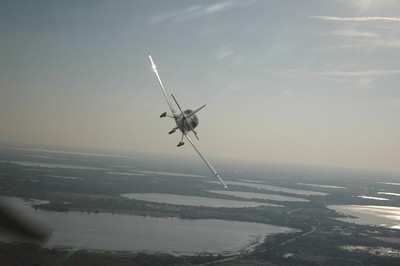Aero-Tips!
A good pilot is always learning -- how many times have you heard
this old standard throughout your flying career? There is no truer
statement in all of flying (well, with the possible exception of
"there are no old, bold pilots.") It's part of what makes aviation
so exciting for all of us... just when you think you've seen it
all, along comes a scenario you've never imagined.

Aero-News has called upon the expertise of Thomas P. Turner,
master CFI and all-around-good-guy, to bring our readers -- and us
-- daily tips to improve our skills as aviators, and as
representatives of the flying community. Some of them, you may have
heard before... but for each of us, there will also be something we
might never have considered before, or something that didn't
"stick" the way it should have the first time we memorized it for
the practical test.
It is our unabashed goal that "Aero-Tips" will help our readers
become better, safer pilots -- as well as introducing our
ground-bound readers to the concepts and principles that keep those
strange aluminum-and-composite contraptions in the air... and allow
them to soar magnificently through it.
Look for our daily Aero-Tips segments, coming each day to you
through the Aero-News Network. Suggestions for future Aero-Tips are
always welcome, as are additions or discussion of each day's tips.
Remember... when it comes to being better pilots, we're all in this
together.
Aero-Tips 04.08.06
"Load factor" is the force being experienced by an airplane
expressed as a function of the airplane's weight. A load factor of
three, for instance, means the airplane is being stressed at three
times its current weight. If an airplane is being turned on its
lateral axis, pitching up (or down) the airplane tries to turn
inside (or outside) the inertia that wants to carry it forward --
overcoming inertia is manifested in a higher load factor.

Load factor three, Mr. Sulu
Load factors are expressed in terms if "G", or the normal force
of gravity. At a load factor of three our airplane is in "3G"
flight; if the airplane currently weighs 2500 pounds at 3G its
structure is subjected to 7500 pounds of force.
A level turn at about 70 degrees of bank results in a 3G load.
That's pretty extreme, but at more "normal" banks like the
55� bank steep turn of FAA checkride fame the airplane will
be at just under 2G, and a 45� bank creates roughly 1.5G.
Banks at or below about 30� add little to no G-load.
Feel the force
You'll be able to feel the force of 1.5G or more. That's
good-because high G-loads are potentially hazardous. Most airplanes
are certified in the Normal category, meaning they will not be
damaged at loads up to 3.8G (or negative, downward loads up to
-1.52G). Some airplanes are certified in the Utility category, with
a higher load factor tolerance. Utility category airplanes can
withstand repeated load factors of +4.4 to -1.76. Aerobatic
airplanes, designed for even more structural integrity while
maneuvering, are stressed to +6.0 to -3.0G. Some airplanes may be
certified to withstand even higher G-loads.
No one knows the cumulative effect of multiple high-G events
over many, many years-longevity testing was not a part of aircraft
certification until fairly recently. More immediately, increased
load factor dramatically increases stalling speed. What's a
perfectly safe airspeed at a 30� or lower bank may be
dangerously close to (or below) stall speed if you let the bank
angle get too steep. That's one reason your instructor told you to
keep bank angles shallow in the traffic pattern.
Aero-tip of the day: Understand what causes
increased G-loading, and why it can be hazardous.
 ANN's Daily Aero-Linx (04.15.24)
ANN's Daily Aero-Linx (04.15.24) Classic Aero-TV: 'No Other Options' -- The Israeli Air Force's Danny Shapira
Classic Aero-TV: 'No Other Options' -- The Israeli Air Force's Danny Shapira Aero-News: Quote of the Day (04.15.24)
Aero-News: Quote of the Day (04.15.24) Airborne 04.16.24: RV Update, Affordable Flying Expo, Diamond Lil
Airborne 04.16.24: RV Update, Affordable Flying Expo, Diamond Lil ANN's Daily Aero-Term (04.16.24): Chart Supplement US
ANN's Daily Aero-Term (04.16.24): Chart Supplement US




